Bitcoin ETF
Spot Crypto ETFs Prompted Bitwise to Rethink Its Fund Lineup
Published
3 months agoon
By
admin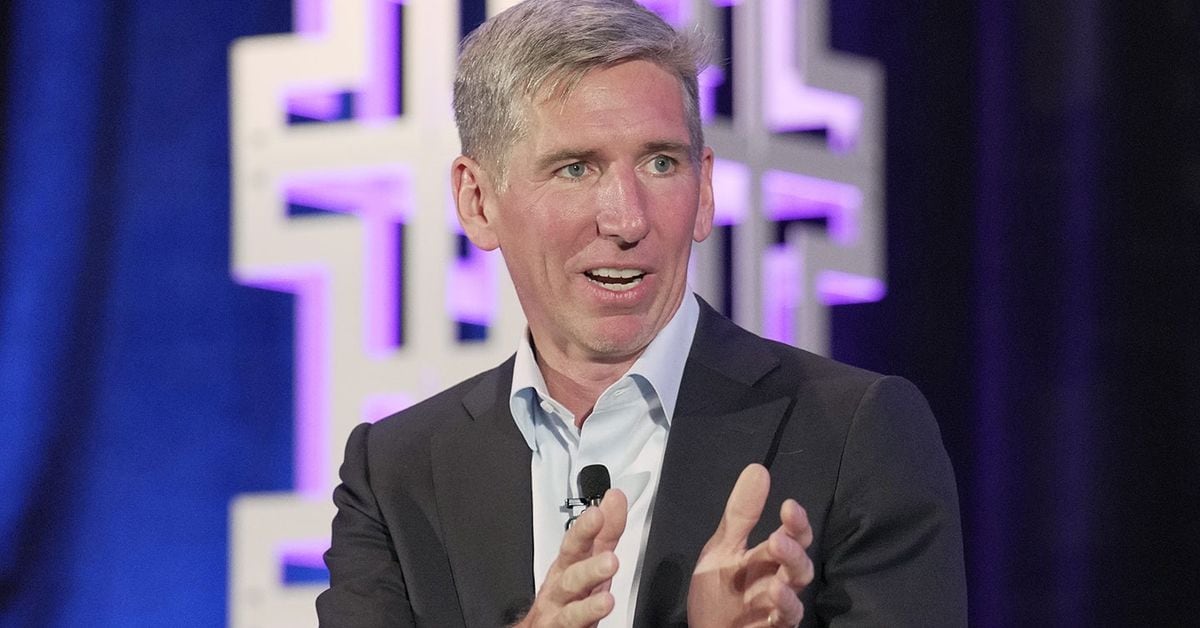

“Bitwise is likely just catering to things they’re hearing from clients and potential clients,” said James Seyffart, ETF analyst at Bloomberg Intelligence. “They have an actively managed division within Bitwise, so it makes sense to give it a try. We know there are investors looking to invest in bitcoin but who want to limit the volatility and particularly the downside volatility/drawdowns. I think that’s what this will aim to do. Whether or not it will be successful is something we will learn in the coming years, but timing the market is extremely hard.”
Source link
You may like


This crypto could make up for missing early Bitcoin, Ethereum, and Solana


Last Minute Opening Brief By Outgoing Gary Gensler


MARA CEO Advocates “Invest And Forget” Approach To Bitcoin, Citing Strong Historical Performance


How to join RCO Finance’s crypto presale before it ends


Ethereum Price Targets $10K, A $0.175 Crypto Coin Could Hit $30


Lightchain AI could be a better bet for a 10x profit than Dogecoin
Altcoin
MARA CEO Advocates “Invest And Forget” Approach To Bitcoin, Citing Strong Historical Performance
Published
3 hours agoon
January 4, 2025By
admin
In a recent interview with FOX Business, Fred Thiel, CEO of Bitcoin (BTC) mining firm MARA Holdings, advocated an “invest and forget” strategy for retail investors looking to gain exposure to the world’s leading digital currency.
Thiel Cites Positive Historical Performance Of Bitcoin
BTC continues to trade within the mid-$90,000 range after a recent pullback from its all-time high (ATH) of $108,135. While crypto analysts keep a close eye on the flagship cryptocurrency’s price movements, major BTC holders appear less concerned about short-term fluctuations.
Related Reading
Citing Bitcoin’s historical performance, Thiel advised retail investors to adopt a long-term approach. He noted that Bitcoin has closed the year at a lower price only three times in its 14-year history, including during the peak of the COVID-19 pandemic. Thiel stated:
My recommendation, to my kids, for example, is they put just a little bit away every month in Bitcoin and forget about it. Over two, three, four years, it grows, and that’s what people do.
Thiel also emphasized BTC’s consistent growth, highlighting that it has appreciated annually by an average of 29% to 50%. However, BTC remains a high-risk asset, and risk-averse investors may shy away until the asset class achieves broader acceptance or gains official recognition from a major global economy.
For instance, the establishment of a US strategic Bitcoin reserve could solidify the cryptocurrency’s legitimacy as an asset and potentially spark a domino effect, encouraging other nations to follow suit. Thiel described such a reserve as a key catalyst for driving Bitcoin’s price to new highs in 2025.
Additionally, Thiel pointed to high institutional involvement through Bitcoin exchange-traded funds (ETFs) and favorable digital asset regulations under the Trump administration as other factors that could support BTC’s growth this year.
Although Thiel’s advice was aimed at retail investors, recent data suggests that many are already planning to increase their Bitcoin holdings. According to a poll conducted by MicroStrategy CEO Michael Saylor, over 75% of 65,164 respondents intend to end 2025 with more BTC than they started with.
The poll reflects growing enthusiasm among retail investors, buoyed by bullish developments in 2024 such as ETF approvals, the Bitcoin halving, and Trump’s election victory in November.
More Companies Adding BTC To Balance Sheet
Bitcoin adoption among corporations continues to grow. While MARA Holdings already holds BTC on its balance sheet, rival crypto mining company Hut 8 recently expanded its holdings to more than 10,000 BTC.
Related Reading
Other firms, such as Japan-based Metaplanet and Canada’s Rumble, joined the Bitcoin movement in 2024. Additionally, Bitcoin ETFs have accumulated over 1 million BTC in under a year since their launch.
However, skepticism remains. Japan’s Prime Minister recently expressed caution about the idea of establishing a strategic Bitcoin reserve, reflecting lingering doubts in some quarters. At press time, BTC trades at $97,229, up 0.7% in the past 24 hours.
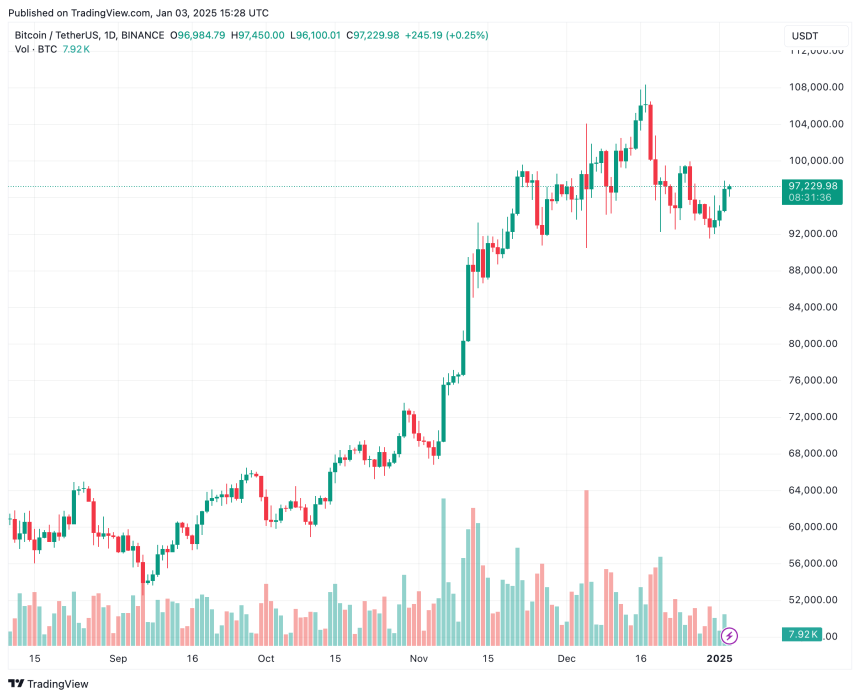
Featured image from Unsplash, Chart from TradingView.com
Source link
Bitcoin
Will Bitcoin ETFs Surpass 1 Million BTC Before 2025?
Published
3 weeks agoon
December 16, 2024By
admin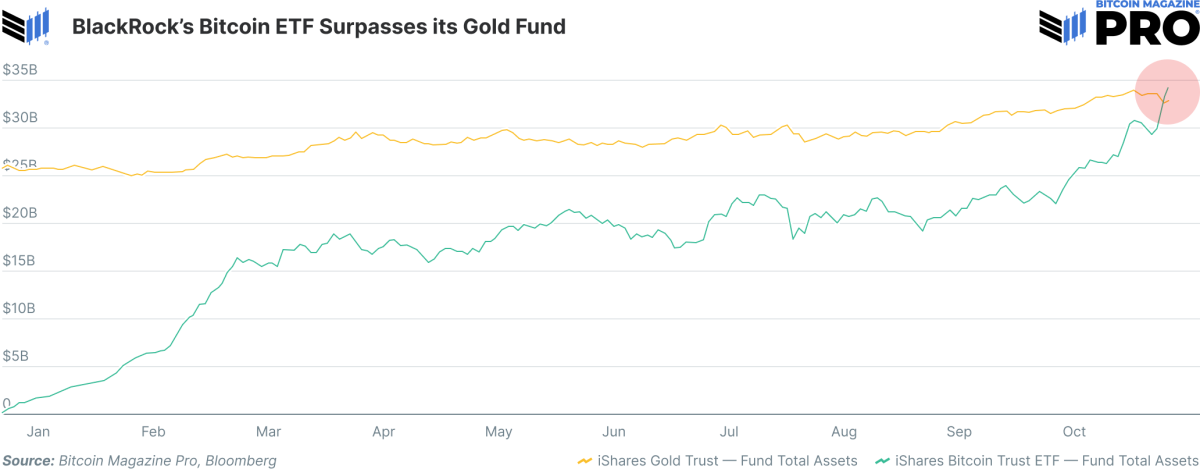
As Bitcoin continues to mature, one of the most telling indicators of its longevity and integration into the broader financial ecosystem is the rapid growth of Bitcoin Exchange-Traded Funds (ETFs). These products—offering mainstream, regulated exposure to Bitcoin—have garnered substantial inflows from both institutional and retail investors since their inception. According to data aggregated by Bitcoin Magazine Pro’s Cumulative Bitcoin ETF Flows Chart, Bitcoin ETFs have already accumulated more than 936,830 BTC, raising the question: Will these holdings surpass 1 million BTC before 2025?
The #Bitcoin ETFs have already accumulated 936,830 #BTC! 🏦
Will this surpass 1,000,000 BTC before 2025? 🪙
Let me know 👇 pic.twitter.com/UojJpJlC4P
— Bitcoin Magazine Pro (@BitcoinMagPro) December 16, 2024
The Significance of the 1 Million BTC Mark
Crossing the 1 million BTC threshold would be more than a symbolic milestone. It would indicate profound market maturity and long-term confidence in Bitcoin as a credible, institutional-grade asset. Such a large amount of Bitcoin locked up in ETFs effectively tightens supply in the open market, setting the stage for what could be a powerful catalyst for upward price pressure. As fewer coins remain available on exchanges, the market’s long-term equilibrium shifts—potentially raising Bitcoin’s floor price and reducing downside volatility.
The Trend Is Your Friend: Record-Breaking Inflows
The momentum is undeniable. November 2024 saw record inflows into Bitcoin ETFs, surpassing $6.562 billion—over $1 billion more than the previous month’s figures. This wave of capital inflow dwarfs the rate of new Bitcoin creation. In November alone, just 13,500 BTC were mined, while more than 75,000 BTC flowed into ETFs—5.58 times the monthly supply. Such an imbalance underscores the scarcity dynamics now in play. When demand vastly outpaces supply, the natural market response is upward price pressure.
A Chart of Insatiable Demand
In a landmark moment, BlackRock’s Bitcoin ETF recently outpaced the company’s own iShares Gold Trust in total fund assets. This moment was captured visually in the November issue of The Bitcoin Report, revealing a clear shift in investor preference. For decades, gold sat atop the throne of “safe haven” assets. Today, Bitcoin’s emerging role as “digital gold” is validated by ever-growing institutional allocations. The appetite for Bitcoin-backed ETF products has become relentless, as both seasoned investors and new entrants acknowledge Bitcoin’s potential to serve as a cornerstone in diversified portfolios.

Long-Term Holding and Supply Shock
One key characteristic of Bitcoin ETF inflows is the long-term nature of these investments. Institutional buyers and long-term allocators are less likely to trade frequently. Instead, they acquire Bitcoin through ETFs and hold it for extended periods—years, if not decades. As this pattern continues, the Bitcoin held in ETFs becomes essentially removed from circulation. The result is a steady drip of supply leaving exchanges, pushing the market toward a potential supply shock.
This trend is clearly illustrated by the latest data from Coinglass. Only about 2.25 million BTC currently remain on exchanges, highlighting a persistent decline in readily available supply. The chart below shows a divergence where Bitcoin’s price appreciation continues upward, while the exchange balances head down—an irrefutable signal of scarcity dynamics at work.

A Perfect Bitcoin Bull Storm and the March Toward $1 Million
These evolving dynamics have already propelled Bitcoin beyond the $100,000 milestone, and such achievements could soon feel like distant memories. As the market rationalizes a potential journey towards $1 million per BTC, what once seemed like a lofty dream now appears increasingly feasible. The “multiplier effect” in market psychology and price modeling suggests that once a large buyer comes into play, the ripple effects can cause explosive price surges. With ETFs continually accumulating, each major purchase may ignite a cascade of follow-on buying as investors fear missing out on the next leg up.
Incoming Trump Administration, the Bitcoin Act, and a U.S. Strategic Reserve
If current trends weren’t bullish enough, a new and potentially transformative scenario is brewing on the geopolitical stage. Incoming President-elect Donald Trump in 2025 has expressed support for the “Bitcoin Act,” a proposed bill directing the Treasury to establish a Strategic Bitcoin Reserve. The plan involves selling part of the U.S. government’s gold reserves to acquire 1 million BTC—about 5% of all currently available Bitcoin—and hold it for 20 years. Such a move would signal a seismic shift in U.S. monetary policy, placing Bitcoin on par with (or even ahead of) gold as a cornerstone of national wealth storage.
With ETFs already driving scarcity, a U.S. governmental move to secure a large strategic Bitcoin reserve would magnify these effects. Consider that only 2.25 million BTC are available on exchanges today. Should the United States aim to acquire nearly half of that in a relatively short timeframe, the supply-demand imbalances would become extraordinary. This scenario could unleash a hyper-bullish mania, pushing Bitcoin’s price into previously unthinkable territory. At that point, even $1 million per BTC might be viewed as rational, a natural extension of the asset’s role in global finance and national strategic reserves.
Conclusion: A Confluence of Bullish Forces
From near-term ETF inflows surpassing new issuance fivefold, to longer-term structural shifts like a potential U.S. Bitcoin reserve, the fundamentals are stacking in Bitcoin’s favor. The growing scarcity, combined with the multiplier effect of large buyers entering the market, sets the stage for exponential price appreciation. What was once considered unrealistic—a Bitcoin price of $1 million—now sits within the realm of possibility, underscored by tangible data and powerful economic forces at play.
The journey from today’s levels to a new era of Bitcoin price discovery involves more than just speculation. It’s supported by a tightening supply, unyielding demand, rising institutional acceptance, and even the potential imprimatur of the world’s largest economy. Against this backdrop, surpassing 1 million BTC in ETF holdings before 2025 may be just the beginning of a much larger story—one that could reshape global finance and reimagine the very concept of a reserve asset.
For the latest insights on Bitcoin ETF data, monthly inflows, and evolving market dynamics, explore Bitcoin Magazine Pro.
Disclaimer: This article is for informational purposes only and should not be considered financial advice. Always do your own research before making any investment decisions.
Source link
Bitcoin
Put Options for BlackRock’s Bitcoin (BTC) ETF at $30, $35 See High Volume – What’s Happening?
Published
3 weeks agoon
December 16, 2024By
admin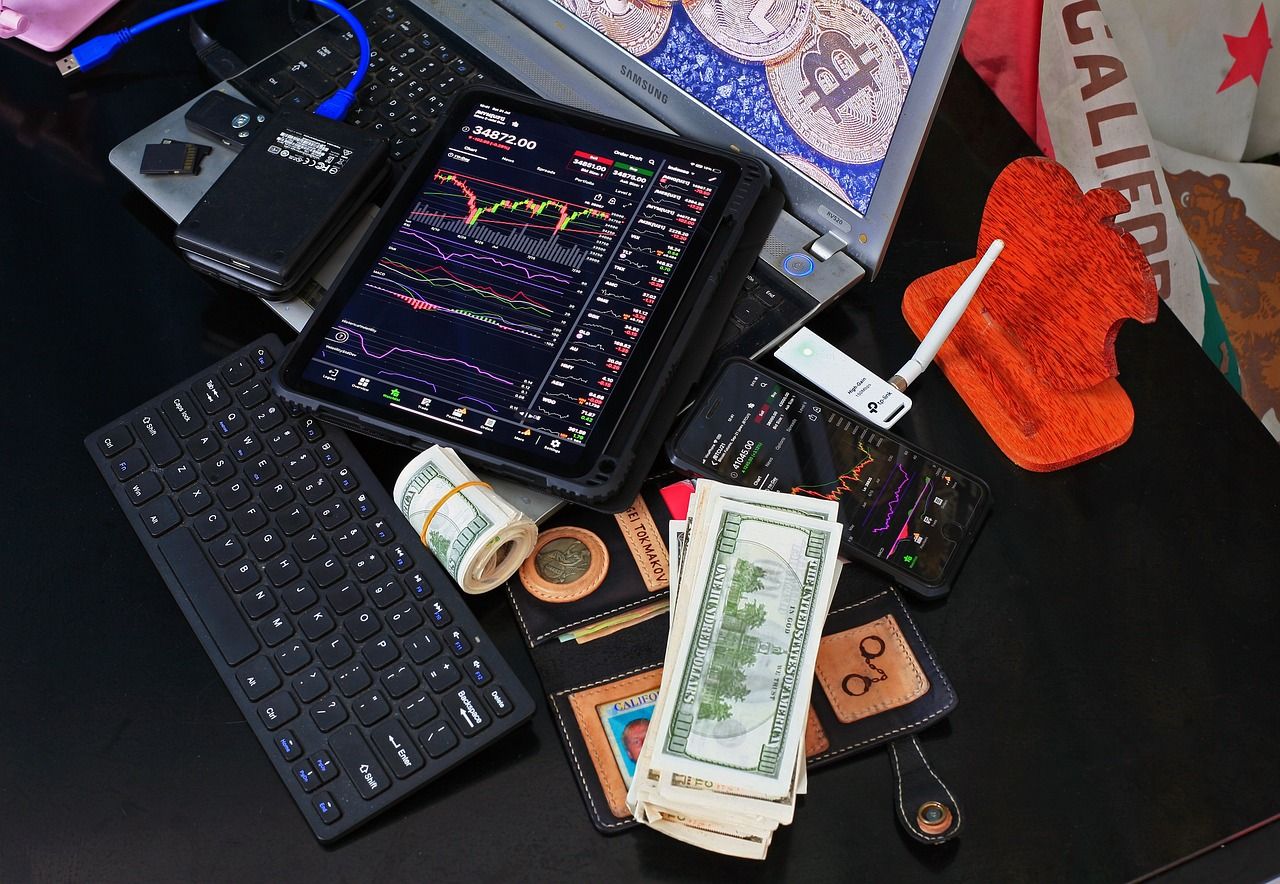
Surging volumes in put options linked to BlackRock’s Nasdaq-listed spot bitcoin ETF (IBIT) could be interpreted as bearish sentiment. That’s not necessarily the case.
On Friday, more than 13,000 contracts of the $30 out-of-the-money (OTM) put option expiring May 16 changed hands as the ETF rose 1.7% to $57.91, according to data from Amberdata. Volume in the $35 put option expiring Jan. 16, 2026, topped 10,000 contracts.
Most of the activity probably stems from market participants looking to generate passive income through “cash-secured put selling” rather than outright purchase of the options as bearish bets, according to Greg Magadini, Amberdata’s director of derivatives.
A put seller, offering insurance against price drops in return for a premium, is obligated to purchase the underlying asset at a predetermined price on or before a specific expiration date. (That’s opposed to the buyer of the put, who has the right but not the obligation to sell the asset.)
That means savvy traders often write OTM puts to acquire the underlying asset at a lower price while pocketing the premium received by selling the put option. They do so by continuously maintaining the cash required to purchase the asset if the owner of the put option exercises their right to sell the asset.
Hence, the strategy is called “cash-secured” selling of puts. In IBIT’s case, sellers of the $35 put expiring in January 2026 will keep the premium if IBIT stays above that level until expiry. If IBIT drops below $35, the put sellers must buy the ETF at that price while keeping the premium received. The sellers of the $30 put expiring in May next year face a similar payoff scenario.
“The $35 Puts for Jan 2026 traded +10k contract with an IV range of 73.52% to 69.94%, VWAP at 70.75% suggests net selling from the street… potentially Cash Secured put selling flows (for traders who missed the rally),” Magadini said in a note shared with CoinDesk.

Saxo Bank’s analyst suggested cash-secured put selling as the preferred strategy in Nvidia early this year.
Calls are pricier than puts
Overall, IBIT call options, which offer an asymmetric upside to buyers, continue to trade pricer than puts.
As of Friday, call-put skews, with maturities ranging from five to 126 days, were positive, signaling relative richness of implied volatility for calls. The bullish sentiment is consistent with the pricing in options tied to bitcoin and trading on Deribit.
On Friday, IBIT recorded a net inflow of $393 million, representing the majority of the total inflow of $428.9 million across the 11 spot ETFs listed in the U.S, according to data tracked by Farside Investors.

Source link
This crypto could make up for missing early Bitcoin, Ethereum, and Solana
Last Minute Opening Brief By Outgoing Gary Gensler
MARA CEO Advocates “Invest And Forget” Approach To Bitcoin, Citing Strong Historical Performance
How to join RCO Finance’s crypto presale before it ends
Ethereum Price Targets $10K, A $0.175 Crypto Coin Could Hit $30
Lightchain AI could be a better bet for a 10x profit than Dogecoin
Billionaire Stanley Druckenmiller Dumps $2,500,000,000 Portfolio, Pours Millions Into New Asset: Report

DOGE, BONK, ICP, EOS, Meme Coins Skyrocket
Traders bet on $0.0008 altcoin for 1,000x growth in 2025
Solana’s Phantom Wallet Sets Record Straight on Airdrop Rumors
FDIC Took Issue With Banks Using Public Blockchains Like Ethereum, FOIA Docs Reveal

Michael Saylor's Trump Meeting Is Turbo Bullish for Bitcoin
Create and launch a meme coin presale project in 2025
Jesse Pollak Reveals Efforts To Tokenize Coinbase COIN On Base
Trump-Backed Mike Johnson Re-Elected Speaker of the House

Telegram users can send gifts to friends, TON fails to pump

Bitcoin Could Rally to $80,000 on the Eve of US Elections

Institutional Investors Go All In on Crypto as 57% Plan to Boost Allocations as Bull Run Heats Up, Sygnum Survey Reveals

Crypto’s Big Trump Gamble Is Risky

A Kamala Presidency Could Be Just as Bullish for Bitcoin

Ethereum’s lowered yield might signal a paradigmatic shift in the ecosystem

Ripple-SEC Case Ends, But These 3 Rivals Could Jump 500x

SEC filing underway, Bitcoin rewards app Fold adopts FLD ticker

Cardano and the XRP price action lock in bulls vs bears battle as RCO Finance prepares for 3,000% surge

Tether CEO Paolo Ardoino Denies Rumors That Stablecoin Issuer Is Under Federal Investigation

A16z-backed Espresso announces mainnet launch of core product

Crypto Exchange OKX Moves To Support USDC Ecosystem by Adding Six New Trading Pairs

Trump’s Coin Is About As Revolutionary As OneCoin

Ripple Vs. SEC, Shiba Inu, US Elections Steal Spotlight

What is World Chain? Human-First New Blockchain Goes Live
Trending

 News3 months ago
News3 months agoTelegram users can send gifts to friends, TON fails to pump

 Bitcoin2 months ago
Bitcoin2 months agoBitcoin Could Rally to $80,000 on the Eve of US Elections

 Bitcoin2 months ago
Bitcoin2 months agoInstitutional Investors Go All In on Crypto as 57% Plan to Boost Allocations as Bull Run Heats Up, Sygnum Survey Reveals

 Opinion2 months ago
Opinion2 months agoCrypto’s Big Trump Gamble Is Risky

 Opinion2 months ago
Opinion2 months agoA Kamala Presidency Could Be Just as Bullish for Bitcoin
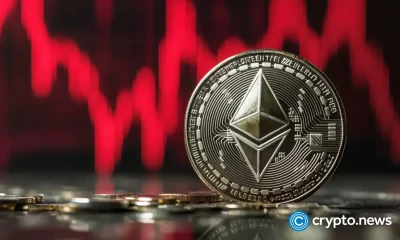
 DeFi3 months ago
DeFi3 months agoEthereum’s lowered yield might signal a paradigmatic shift in the ecosystem
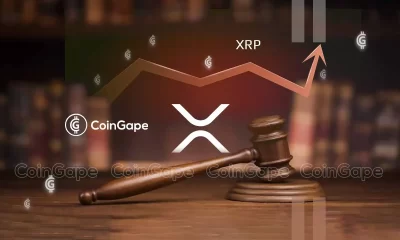
 Price analysis2 months ago
Price analysis2 months agoRipple-SEC Case Ends, But These 3 Rivals Could Jump 500x

 Bitcoin3 months ago
Bitcoin3 months agoSEC filing underway, Bitcoin rewards app Fold adopts FLD ticker


